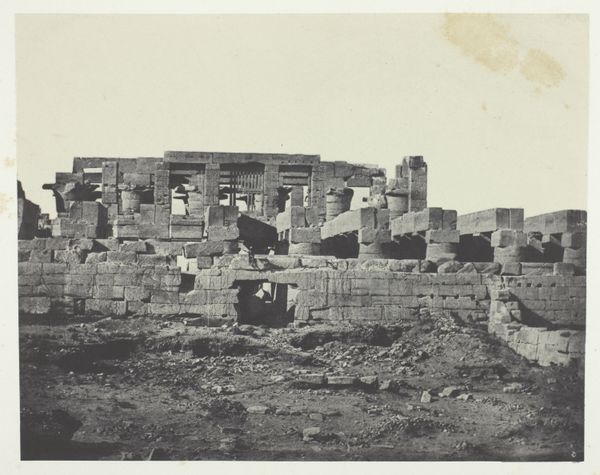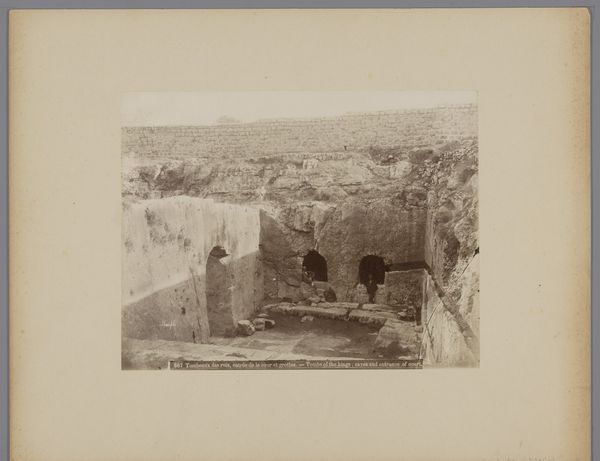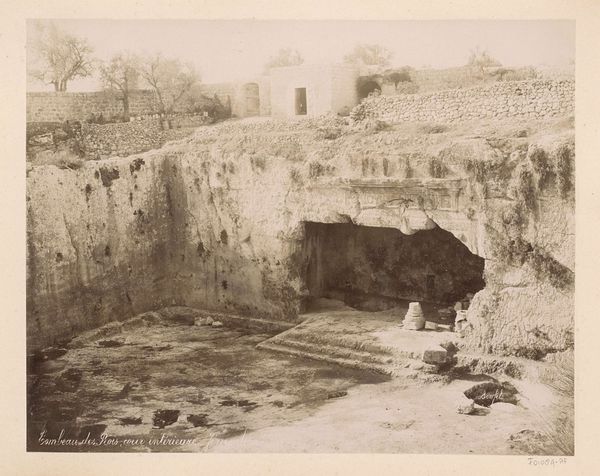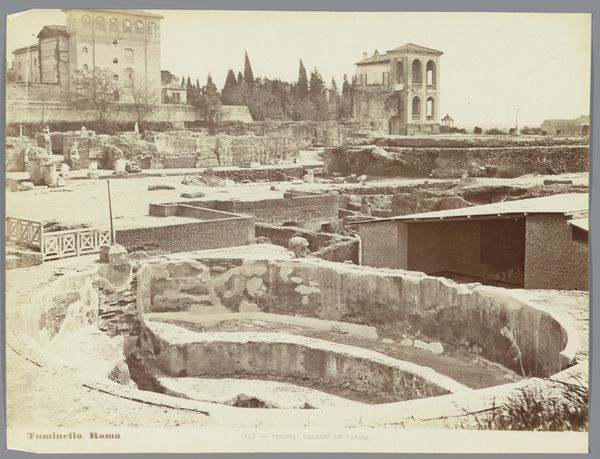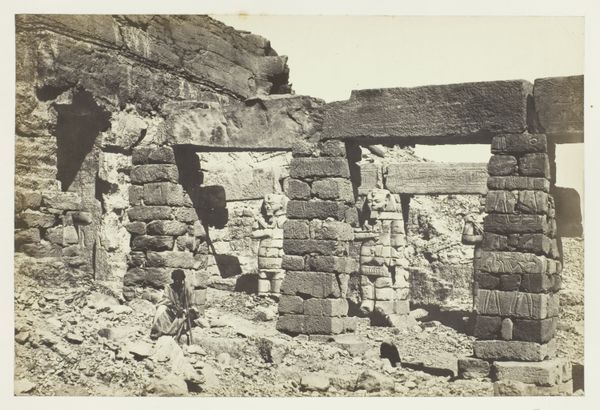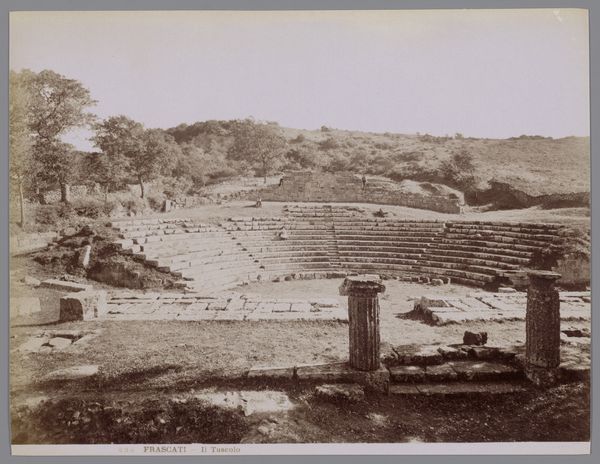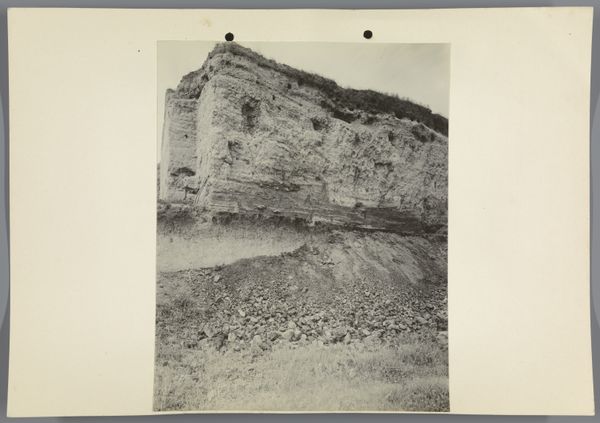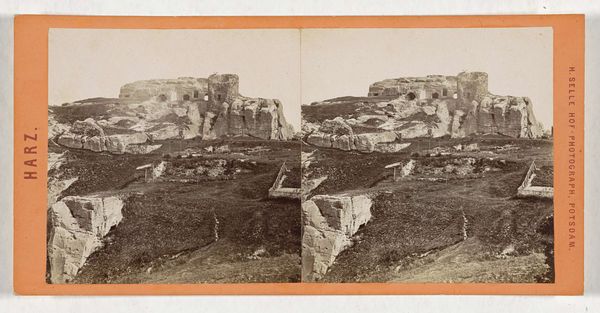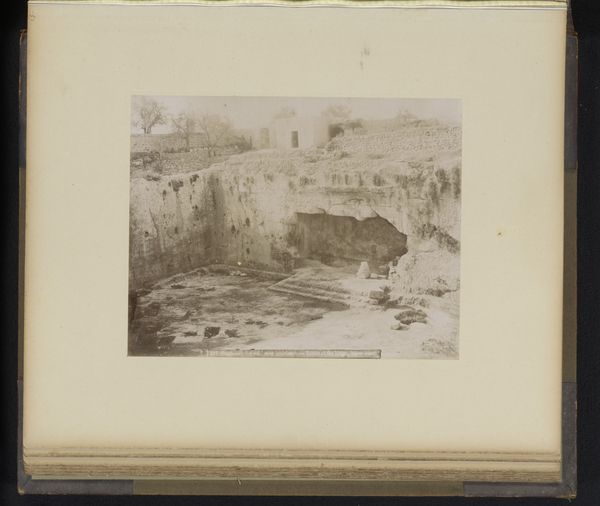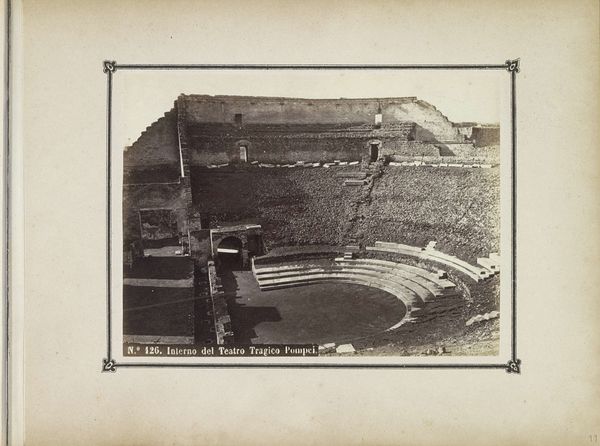
Gezicht op de ruïne van het Griekse amfitheater te Syracuse, Sicilië 1857 - 1914
0:00
0:00
daguerreotype, photography
#
landscape
#
daguerreotype
#
photography
Dimensions: height 198 mm, width 249 mm
Copyright: Rijks Museum: Open Domain
Curator: This is Giorgio Sommer's "View of the Ruins of the Greek Amphitheater in Syracuse, Sicily," likely taken between 1857 and 1914, using a daguerreotype technique. It’s currently held at the Rijksmuseum. Editor: There’s a striking desolation to this image. It whispers of time’s relentless march, turning vibrant centers of culture into silent, crumbling relics. Curator: Absolutely. Notice how Sommer captures the tiered seating, the arena floor, and the small building perched atop the hill behind it, seemingly swallowed by the landscape, its stone worn and aged. Editor: The lack of human presence amplifies that sense of abandonment. It raises questions about power, cultural shifts, and the legacies of vanished civilizations, which resonate with current sociopolitical dynamics related to migration, cultural erasure, and post-colonial landscapes. What narratives did this theater once hold? Curator: Greek theaters served a crucial role not only in entertainment but also in civic and religious life. They were places of storytelling, moral instruction, and community gathering, laden with the symbolic importance of their time. I am fascinated by the idea of what specific emotions those rituals activated within such massive groups. Editor: Right. Think about who was excluded from those rituals too. Performances often reinforced existing power structures, so for whom was this spectacle created, and for whom was it withheld? How did class, gender, or origin dictate who had a voice, literally and figuratively, within this space? Curator: These early photographs of ruins contributed significantly to how Europeans and Americans constructed their image of the ancient world. They sought, and still seek, to understand our place within the larger story of Western civilization by trying to connect emotionally to places like this. Editor: And the sepia tones further enhance the image’s ability to project us back to antiquity, romanticizing the space perhaps and obscuring more difficult truths. But the image has a strength that prevails and inspires. It encourages further study into the many legacies embedded within it. Curator: Sommer’s careful composition creates an iconic visual anchor, helping us, even now, grapple with those many layers of time, belief, and the human drama played out on this very spot.
Comments
No comments
Be the first to comment and join the conversation on the ultimate creative platform.

